You can’t have relationships with other people until you give birth to yourself
-Sonia Sanchez
Reflecting on my recent trip to South Africa to attend and moderate a panel discussion at the “Black Portraitures III - Reinventions: Strains of Histories and Cultures,” a free conference (jointly organized by New York University, Harvard University, Goodman Gallery, and Wits University), I am reminded of how crucial it is to create spaces to belong and to be heard.
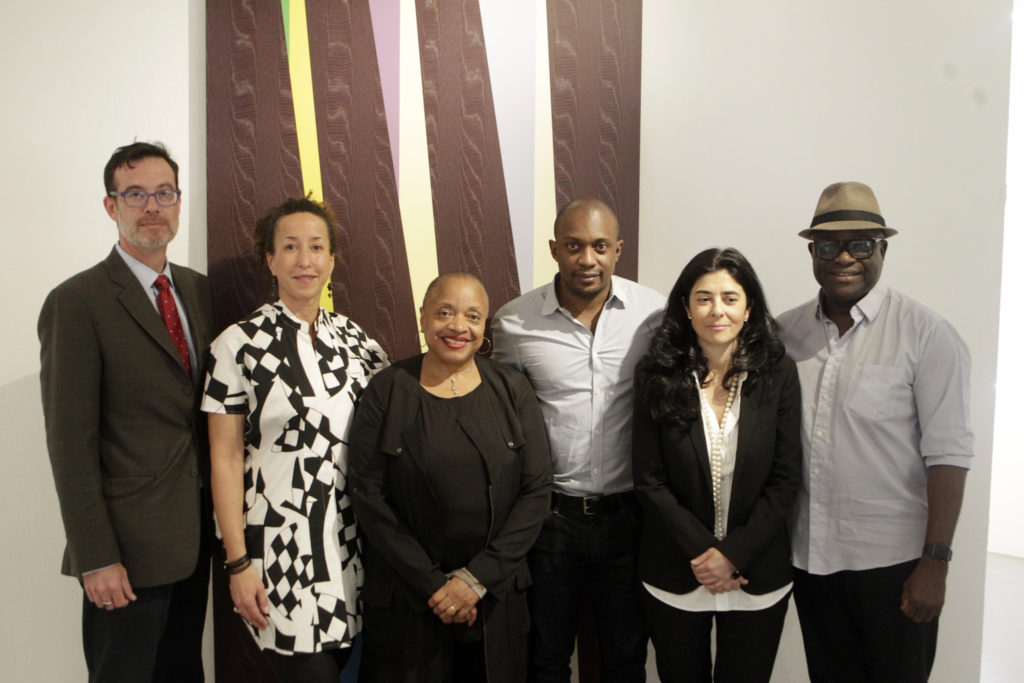
The Black Portraitures III conference organizing committee from left to right: Brett Pyper (Head of School, Wits School of Arts), art historian Cheryl Finley (Cornell University), artist and art historian Deborah Willis (New York University), artist and curator Hank Willis Thomas, curator Liza Essers (Goodman Gallery), and scholar and critic Awam Amkpa (New York University), Photo by Terrence Jennings/terrencejennings.com
Conceived and spearheaded by the deep commitment and scholarship of Deborah Willis, Cheryl Finley, & Awam Amkpa, "Black Portraitures III" with regards to its most recent staging in Johannesburg sought to create a:
“forum for artists, activists, and scholars from around the world to share ideas about the current state of the field of African, African Diaspora and African American art and art history some twenty years after the end of Apartheid.”
The conference also featured a keynote speech from artist, curator and art historian Dr. David C. Driskell who presented a provocative account of his first visit to South Africa. He wrote: “My first visit to the Republic of South Africa in the fall of 1972 brought to my attention the many similarities between the system of legal segregation of Blacks in the American South and the oppressive system of apartheid imposed on people of color in South Africa.”
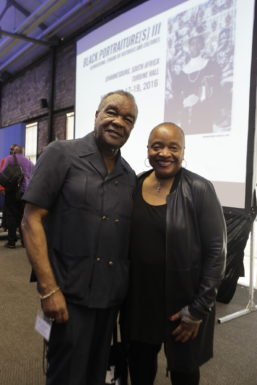
Artist and art historian David C. Driskell pictured with artist and art historian Deborah Willis, Photo by Terrence Jennings/terrencejennings.com
"Black Portraitures III" also included opportunities to view “In Context: Africans in America,” an exhibition curated by Hank Willis Thomas and Liza Essers and jointly held at the Goodman Gallery and the Johannesburg Art Gallery. The conference also included talks & panels with artists such as Mary Sibande, Zanele Muholi, Brendan Fernandes & Ebony Patterson to name a few.
As in previous conferences that laid the groundwork for "Black Portraitures III," including: “Bridging the Gaps: First Annual Conference on African American Art” (Harvard University, 2004); “Here & Now: African and African American Art & Film Conference” (New York University, 2007); “Transformations: New Directions in Black Art” (Maryland Institute College of Art, 2009); “ThinkTank 2010 and Beyond: New Directions in Black Art (Maryland Institute College of Art, 2010); “Beauty & Fashion, The Black Portrait Symposium” (New York University, 2011); “Black Portraitures: the Black Body in the West” (Musée Quai Branly, University Paris Diderot-Paris 7 & École Nationale Supérieure des Beaux-Arts, 2013); “Black Portraitures II: Imaging the Black Body and Restaging Histories” (Villa La Pietra, New York University/Florence, 2015); and most recently “Black Portraitures II: Revisited” (New York University, 2016) – these gatherings are an opportunity for intergenerational learning, the exchange of ideas, and rigorous criticism and engagement with not only the historical and contemporaneous implications of colonization & slavery, but also new lines of inquiry into a variety of topics on pedagogy, queer aesthetics, political activism & social advocacy, post-colonial theory, Pan-Africanism & Afro-Futurism, as well as current trends in curatorial and archival practices, visual art, architecture, film, fashion, music, dance, theater and performance.
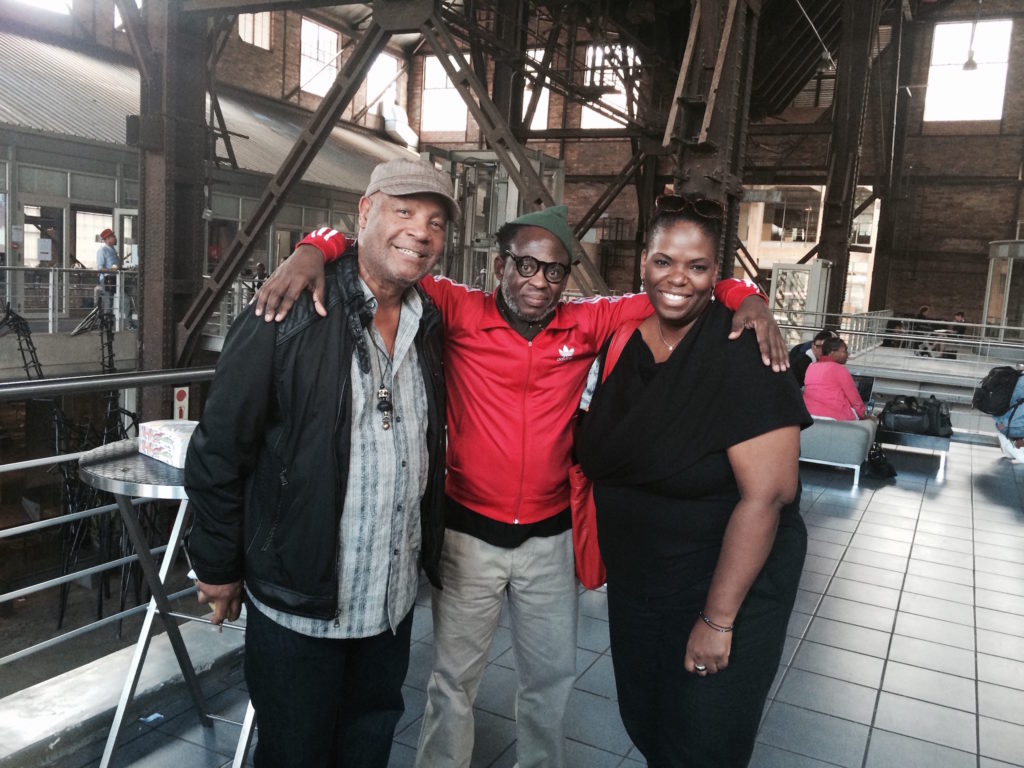
From left to right: artist and former mister of culture for the Black Panther Party Emory Douglas, writer and critic Bongani Madondo, and scholar Kimberly Juanita Brown, founder of The Dark Room: Race & Visual Culture Studies Seminar, Photo by Dell M. Hamilton
Being armed with the opportunity to witness and participate in “Black Portraitures III” as well as in previous conferences has provided me with the tools and language to characterize my practice as ever evolving, interdisciplinary, & punctuated by remembrance.
While I have and probably will continue to have seasons of uncertainty and restlessness, what I can always count on is my intense curiosity about the world and a deep love for the printed word. My sustained inquisitiveness was bolstered as a youth by pilfering my mother’s copy of Maya Angelou’s I Know Why The Caged Bird Sings and Franz Fanon’s The Wretched of the Earth. So while my homework including reading Shakespeare, Chaucer, and Virgil, spending time at my local public library where I could choose to read W. E. B. Du Bois’s The Souls of Black Folk and Ntosake Shange’s for colored girls who have considered suicide/when the rainbow is enuf is what provided me with agency and breathing space.
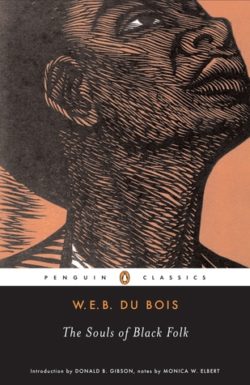
Cover of W. E. B. Du Bois' "The Souls of Black Folk"
I know that it’s somewhat chic now to be anti-academic, anti-intellectual and anti-institutional. But as an adult that still has to wrestle with the social and psychological aftermath of chaos and violence, a state of being which configures me in a way that often leaves me wondering if I can find my footing, I treasure the memories of first encountering the words of Fanon, Angelou, Du Bois, & Shange, as well as the novels of Toni Morrison and Alice Walker.
Their work is/was revelatory and accounted for the fact that my immediate and extended family was devoid of writers, poets, designers, musicians, scholars, curators, historians, artists or intellectuals. It is the work of previous and current generations that enables me to continue to understand how to (or not to) articulate a path forward.
Legacies and bodies of work are what facilitate the location of connections (both direct and indirect), as well as intersections that stretch backwards and forwards in time and criss-cross through a rich constellation of black intellectual, artistic & cultural production.
That is to say that even while the world falls apart, I still want to ask questions, I still want to read, I still want to learn. I still want to think and I still want to plant my feet upon scaffolding, which sustains both individual and collective "Black Portraitures."
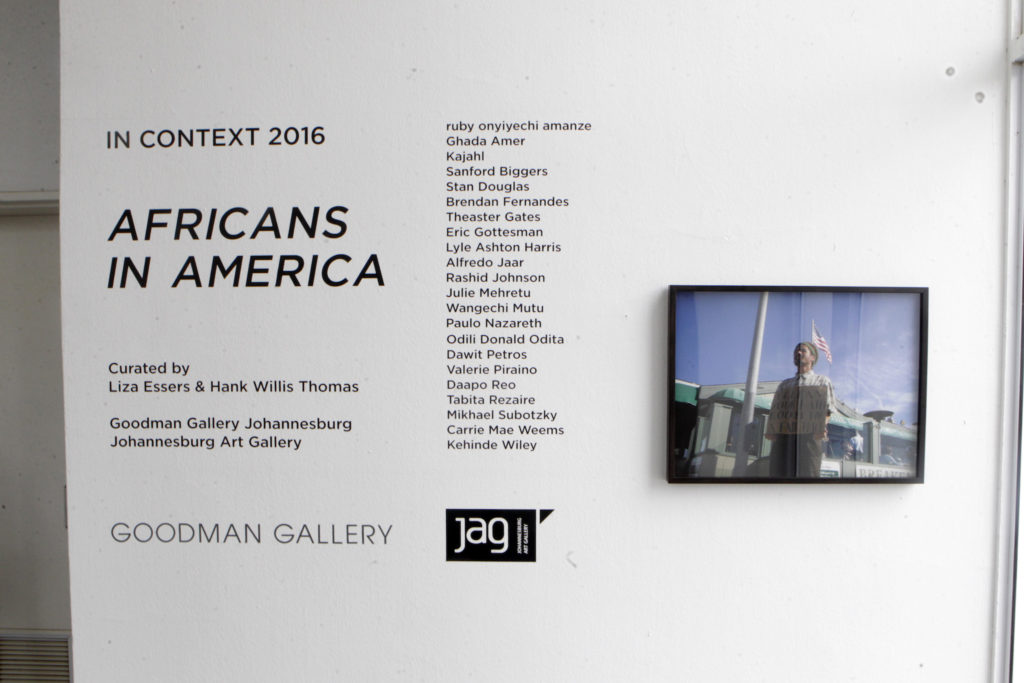
Wall text for the exhibition “In Context: Africans in America” curated by Hank Willis Thomas and Liza Essers, Photo by Terrence Jennings/terrencejennings.com
- The Black Portraitures III conference organizing committee from left to right: Brett Pyper (Head of School, Wits School of Arts), art historian Cheryl Finley (Cornell University), artist and art historian Deborah Willis (New York University), artist and curator Hank Willis Thomas, curator Liza Essers (Goodman Gallery), and scholar and critic Awam Amkpa (New York University), Photo by Terrence Jennings/terrencejennings.com
- Images of the work of black lesbian photographer/visual activist Zanele Muholi are projected during a panel session at Black Portraitures III – Reinventions: Strains of Histories and Cultures, Photo by Terrence Jennings/terrencejennings.com
- Artist and art historian David C. Driskell pictured with artist and art historian Deborah Willis, Photo by Terrence Jennings/terrencejennings.com
- Wall text for the exhibition “In Context: Africans in America” curated by Hank Willis Thomas and Liza Essers, Photo by Terrence Jennings/terrencejennings.com
- From left to right: artist and former mister of culture for the Black Panther Party Emory Douglas, writer and critic Bongani Madondo, and scholar Kimberly Juanita Brown, founder of The Dark Room: Race & Visual Culture Studies Seminar, Photo by Dell M. Hamilton

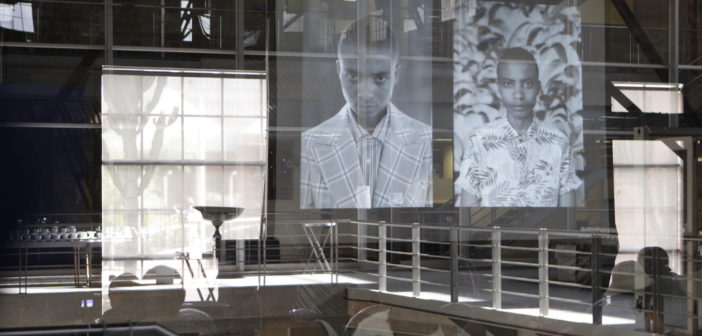

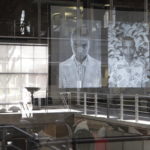

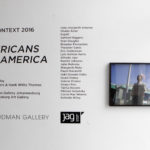
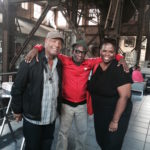

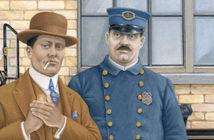
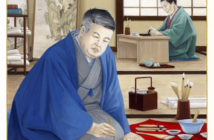
1 Comment
Pingback: Black Portraiture[s] III In The Press « Black Portraiture[s] Conferences